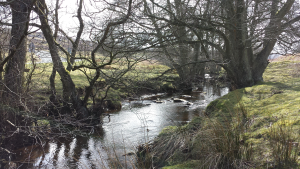 The Department for Environment, Food & Rural Affairs (DEFRA) explains how land managers and farmers can apply for funding from the Landscape Recovery scheme for wildlife and river projects.
The Department for Environment, Food & Rural Affairs (DEFRA) explains how land managers and farmers can apply for funding from the Landscape Recovery scheme for wildlife and river projects.
image: for illustration purposes only
– P Badcock
…funding for long-term, large-scale projects in England…
DEFRA writes:
The Landscape Recovery scheme provides funding for long-term, large-scale projects in England. It is a competitive scheme and you can apply for the first round between 1 February and 24 May 2022.
The first round aims to support projects that help:
- recover threatened native species, restore priority habitats, improve habitat quality, and increase species abundance
- restore streams and rivers, improve water quality and biodiversity, and adapt to climate change
These projects should also provide additional benefits, like contributing to net zero.
For example, you could apply if you are planning a project to:
- build, expand or link nature reserves
- create and improve woodland
- develop a mosaic of habitats
- restore water bodies, rivers, and floodplains to a more natural state
- improve bogs, fens or saltmarshes
Applications will be scored according to how well they meet the first round selection criteria.
If you receive one of the highest scores, you will:
- receive funding for up to 2 years to help you prepare to deliver your project
- get help to secure private funding for long-term delivery
- be invited to negotiate a Landscape Recovery implementation agreement with Defra
If you reach an agreement, the project can start. If you do not reach agreement, then Defra will work with you to identify other funding which may be more suitable.
Read the guidance on the eSourcing portal to find out more about the selection criteria, scoring and agreements.
Who can apply
All land managers and landowners are eligible to apply.
This includes:
- farmers and farm tenants
- foresters
- collaborative groups
- charities
- non-farming businesses
Tenants and landowners will need to work together to develop bids.
Public bodies can also apply, but only in collaboration with private land managers (including landowners or tenants).
The person who applies does not need to be a land manager within the proposed project. For example, an agent or representative body can apply on your behalf. In your application, you should confirm that you have the support of the landowners and tenants from the project area.
Eligible land
Your project must be on:
- land in England
- a broadly connected area of at least 500 hectares (ha), up to a maximum of 5,000ha
Projects can:
- involve whole holdings or parts of them
- extend across national borders if there is at least 500ha in England, but only the land in England will be eligible for funding from this scheme
- include land that is in other government schemes, but Defra would not pay for activities already being funded
What you need to do
Read all the documents on the eSourcing portal before you apply.
You will need to:
- complete the application form to provide details about your project and explain how it meets each of the scheme criteria
- complete the development cost breakdown form
- provide maps showing the existing land use and planned changes
How to apply
You can apply using the eSourcing Portal.
You cannot make any changes to your application after you have submitted it….
After you have applied
Defra and expert advisers will evaluate your application. You should get a response on the outcome by 8 July 2022.
If you are successful, we will get in touch with you to enrol you onto the scheme and finalise your project development grant.
If you are not successful in this round, you can still apply for future rounds of Landscape Recovery funding or other schemes.

